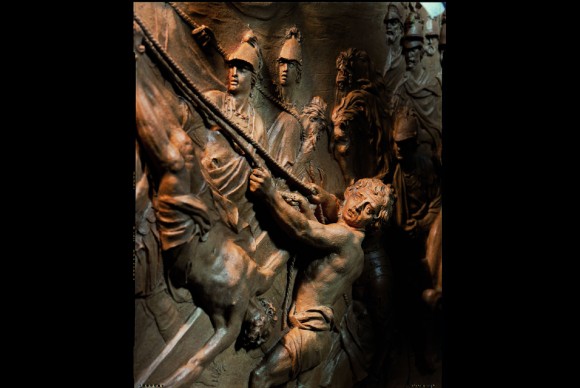The Van Herck Collection: Terracottas from the 17th and 18th Century at the Bonnefantenmuseum
July 4, 2011 by All Art News
Filed under Art Events & Exhibitions
MAASTRICHT.- There are over 50 terracotta statues on display in the exhibition The Van Herck collection – Terracottas from the 17th and 18th century in the Bonnefantenmuseum. The statues were part of the impressive collection of the Antwerp art connoisseur and collector Charles Van Herck (1884 – 1955). A small selection of his collection, which his relatives placed in the custody of the King Boudewijn Foundation in Brussels, is usually on display in the Museum of Fine Arts in Antwerp. As the museum is currently undergoing renovation, this summer the Bonnefantenmuseum is exhibiting a larger selection from this collection and making it accessible once again to a wide public. The exhibition is on view from July 3 through October 9 2011.
Van Herck
Charles Van Herck came from a family of antique dealers, and on graduating as an architect from the Royal Academy of Fine Arts in Antwerp, in 1902, he followed in the footsteps of his forefathers. Besides being a dealer, he also acted as an expert at auctions, made inventories of estates, and did research into his great passion: the life and work of Antwerp sculptors from the 17th and 18th century. Through this interest, Charles Van Herck developed a great aesthetic preference for drawings and terracottas by these sculptors, putting together an exceptional collection of drawings and terracottas by these Antwerp artists.

Jacques Bergé, The Crucifixion of Peter, terracotta, 35 x 56 cm. 1733. Photo: King Boudewijn Foundation, coll. Charles Van Herck, Royal Museum of Fine Arts Antwerp, Belgium, © P. de Formanoir.
Bozzetti & Modelli
In his private collection, Van Herck was able to amass many bozzetti and modelli, which are forms of modelling that give excellent insight into the creative process of the sculptor. The bozzetti often served as a way of recording an artist’s idea by working it roughly and quickly in clay. The modelli, on the other hand, were more advanced and detailed versions of the original idea and were often used to obtain the approval of the patron. The modelli were often kept in the sculptors’ ateliers for longer than the bozetti, because they were more detailed and could therefore be used as study material later on, whereas the bozzetti were regarded merely as quick sketches and were destroyed after they had served their purpose. Nowadays, the modelli, in particular, are regarded as works of art in their own right, and this happened occasionally in the 17th and 18th century as well, as shown by the signatures on some of the modelli from the collection.
The highlights of the exhibition include a signed self-portrait of the Antwerp-London sculptor Michael Rysbrack, dating from around 1730. The artist regards the world self-confidently and the soft fabrics of his coat and shirt have been made to look very lifelike in the hard-baked terracotta.
Of a whole other order, but no less impressive is the Modello made by Artus Quellinus the Elder, around 1650, for a marble relief in the Royal Palace (previously the town hall) in Amsterdam. The representation of Apollo and Python is still part of a series of depictions of gods from antiquity.
The terracottas are both religious and secular in nature, and stories are represented from the Bible as well as from antiquity, though not all the statues are narrative. There are also portraits of Hercules, Beethoven and Rossini, as well as the aforementioned self-portrait by Rysbrack.
